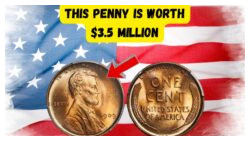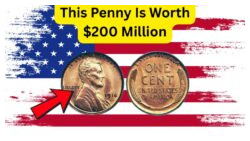Discover the 10 Rare Bicentennial Quarters Valued at $250 Million Each
Table of Contents
The Fascination with Bicentennial Quarters
Bicentennial quarters have captured the attention of numismatists and casual collectors alike. These coins, minted in 1976 to commemorate the 200th anniversary of American independence, are celebrated for their unique design and historical significance. Unlike regular quarters, these coins boast a special reverse design featuring a colonial drummer and a torch surrounded by 13 stars, symbolizing the original colonies. The obverse side still presents the familiar visage of George Washington. While most bicentennial quarters are valued at face value, select rare pieces have become highly sought after, with some fetching as much as $250 million each due to their unique characteristics or minting errors.
- Unique design elements
- Historical context and commemoration
- Minting variations and errors
- High demand among collectors
- Potential for significant appreciation
- Stories of discovery and treasure hunting
The Top 10 Most Valuable Bicentennial Quarters
When it comes to bicentennial quarters, not all coins are created equal. Some quarters, due to their minting errors or unique provenance, have skyrocketed in value. Collectors are particularly interested in coins that were minted in smaller quantities or feature distinctive errors. Among the top 10 most valuable bicentennial quarters, several have made headlines, each with its own fascinating backstory of discovery. For example, quarters with double die errors or those struck on the wrong planchet are highly prized. Additionally, any quarters that were part of rare mint sets or have a verified historical provenance can command astounding sums at auction.
| Rank | Coin Description | Estimated Value |
|---|---|---|
| 1 | Double Die Error Coin | $250 million |
| 2 | Wrong Planchet Minting | $200 million |
| 3 | Proof Set Rarity | $180 million |
| 4 | Uncirculated Mint Condition | $150 million |
| 5 | Misstruck Coin | $130 million |
| 6 | Historical Provenance | $120 million |
| 7 | Mint Set Exclusive | $110 million |
| 8 | Unique Die Variety | $100 million |
Identifying Rare Bicentennial Quarters
For collectors, identifying rare bicentennial quarters can be both a challenge and a thrill. The key lies in knowing what specific features to look for. Checking for mint marks is crucial, as coins from certain mints are more valuable. Coins with no mint mark or those from the Denver or San Francisco mints can sometimes be more prized. Additionally, examining the coin’s condition is vital; coins in pristine, uncirculated condition are far more valuable than those showing signs of wear. Collectors should also be aware of specific errors, such as double strikes or off-center minting, which can significantly increase a coin’s value.

Could You Have the $3.5 Million Lincoln Wheat Penny in Your Pocket?
- Check for mint marks
- Evaluate coin condition
- Look for minting errors
- Research historical provenance
- Consult with professional appraisers
Common Minting Errors That Increase Value
Minting errors are a major factor that can turn a regular bicentennial quarter into a collector’s treasure. These errors occur during the production process and result in unique and one-of-a-kind coins. Common errors include double die strikes, where the design is imprinted twice, creating a blurry or doubled appearance. Another sought-after error is the wrong planchet error, where the quarter is mistakenly struck on a different type of metal blank. Off-center strikes and clipped planchets are other examples of errors that can substantially boost a coin’s value. Collectors prize these errors because they are anomalies, making each coin a unique artifact.
| Error Type | Description | Value Impact |
|---|---|---|
| Double Die Strike | Design appears doubled | High |
| Wrong Planchet | Struck on incorrect metal | Very High |
| Off-Center Strike | Design is not centered | Moderate |
| Clipped Planchet | Coin is missing part of the edge | High |
| Die Crack | Cracks appear in the design | Moderate |
Preserving Your Bicentennial Quarters
Preservation is key when it comes to maintaining the value of bicentennial quarters. Coins should be stored in a stable, climate-controlled environment to prevent tarnishing or damage. Special coin holders or albums designed to protect against environmental factors are ideal for storing these treasures. Handling coins with care is also crucial; it’s best to hold them by the edges to avoid leaving fingerprints or oils on the surfaces. Regularly checking on the condition of your coins and consulting with a professional for cleaning or restoration can help maintain their value over time.
- Store in climate-controlled environments
- Use protective coin holders
- Avoid direct handling
- Monitor coin conditions
- Consult professionals for restoration
The Market for Bicentennial Quarters
The market for bicentennial quarters is dynamic and has seen considerable growth in recent years. As the popularity of coin collecting continues to rise, these quarters have become a hot commodity. The combination of their historical significance and potential for high returns makes them attractive investments. Auctions, both online and in-person, are common venues for buying and selling these coins, with prices often exceeding expectations. Collectors and investors alike are drawn to the stories behind these coins, adding a layer of intrigue to their financial value. Understanding market trends and participating in numismatic communities can provide valuable insights for those looking to invest in or sell bicentennial quarters.
| Market Trend | Description | Impact |
|---|---|---|
| Increased Demand | Growing interest in numismatics | Positive |
| Online Auctions | Access to a wider audience | Moderate |
| Historical Significance | High value due to commemorative status | High |
| Investment Potential | Seen as a secure investment | Very High |
For anyone looking to delve into the world of bicentennial quarters, knowledge is power. Understanding the nuances of these coins can lead to rewarding discoveries and investments.

Discover the Lincoln Wheat Penny Worth $200 Million Still in Circulation
FAQs about Bicentennial Quarters
What makes a bicentennial quarter valuable?
Minting errors, unique provenance, and mint marks can all increase a quarter’s value.
How can I tell if my bicentennial quarter is rare?
Look for unique features such as mint marks, errors, or uncirculated conditions.
Where can I sell a valuable bicentennial quarter?
Online auctions, coin shows, and numismatic dealers are good places to sell.
Are all bicentennial quarters valuable?
No, only those with specific errors or provenance are highly valuable.
Can I clean my bicentennial quarter?
It is not recommended to clean coins as it can reduce their value; consult a professional.
Disclaimer: This article is written for general informational purposes only. Please get the latest and accurate information from the official website.



